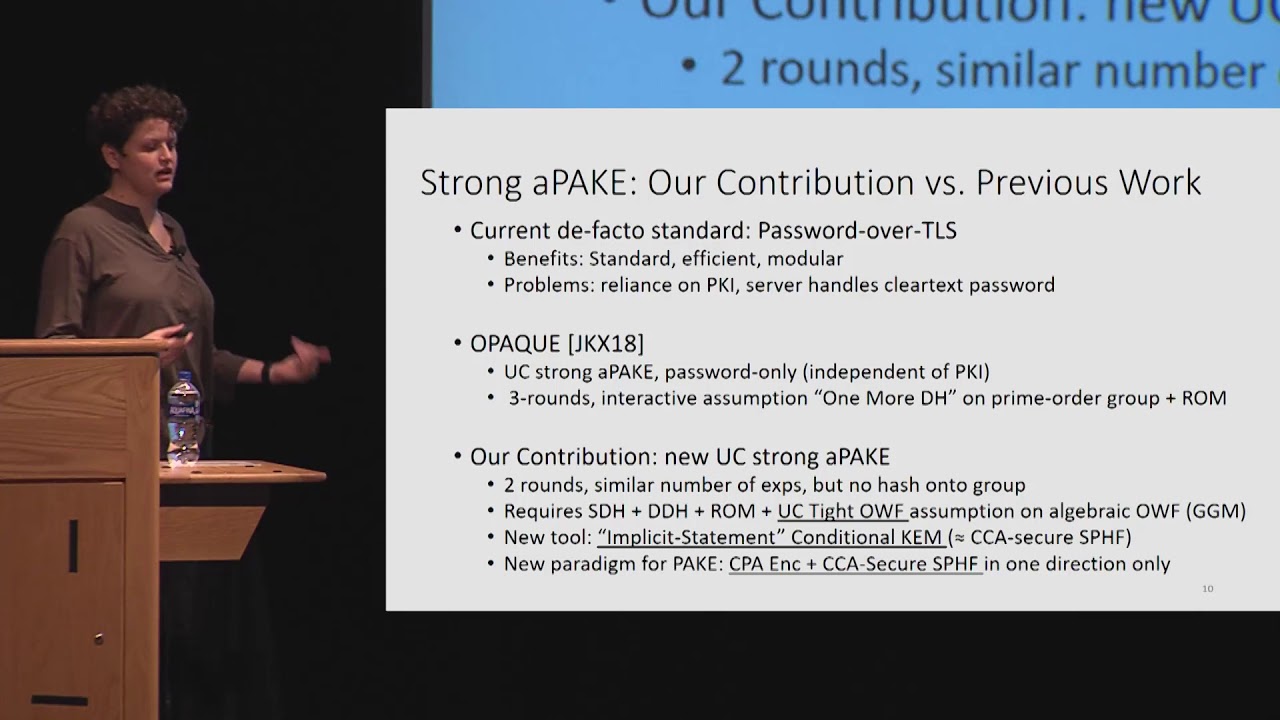Welcome to the resource topic for 2019/647
Title:
Strong Asymmetric PAKE based on Trapdoor CKEM
Authors: Tatiana Bradley, Stanislaw Jarecki, Jiayu Xu
Abstract:Password-Authenticated Key Exchange (PAKE) protocols allow two parties that share a password to establish a shared key in a way that is immune to oine attacks. Asymmetric PAKE (aPAKE) [21] adapts this notion to the common client-server setting, where the server stores a one-way hash of the password instead of the password itself, and server compromise allows the adversary to recover the password only via the (inevitable) offline dictionary attack. Most aPAKE protocols, however, allow an attacker to pre-compute a dictionary of hashed passwords, thus instantly learning the password on server compromise. Recently, Jarecki, Krawczyk, and Xu formalized a Universally Composable strong aPAKE (saPAKE) [24], which requires the password hash to be salted so that the dictionary attack can only start after the server compromise leaks the salt and the salted hash. The UC saPAKE protocol shown in [24], called OPAQUE, uses 3 protocol ows, 3-4 exponentiations per party, and relies on the One-More Diffie-Hellman assumption in ROM. We propose an alternative UC saPAKE construction based on a novel use of the encryption+SPHF paradigm for UC PAKE design [27, 20]. Compared to OPAQUE, our protocol uses only 2 flows, has comparable costs, avoids hashing onto a group, and relies on different assumptions, namely Decisional Diffie-Hellman (DDH), Strong Diffie-Hellman (SDH), and an assumption that the Boneh-Boyen function is a Salted Tight One-Way Function (STOWF). We formalize a UC model for STOWF and analyze the Boneh-Boyen function as UC STOWF in the generic group model and ROM. Our saPAKE protocol employs a new form of Conditional Key Encapsulation Mechanism (CKEM), a generalization of SPHF, which we call an implicit-statement CKEM. This strengthening of SPHF allows for a UC (sa)PAKE design where only the client commits to its password, and only the server performs an SPHF, compared to the standard UC PAKE design paradigm where the encrypt+SPHF subroutine is used symmetrically by both parties.
ePrint: https://eprint.iacr.org/2019/647
Talk: https://www.youtube.com/watch?v=4K-cvpT4e8w
See all topics related to this paper.
Feel free to post resources that are related to this paper below.
Example resources include: implementations, explanation materials, talks, slides, links to previous discussions on other websites.
For more information, see the rules for Resource Topics .
